For our families Summer holiday this year we decided to go to Denmark for a couple of weeks. I’ve always been interested in Denmark especially as it’s thought to be the happiest place on earth – and have also wanted to find out more about the Danish Vikings. I know that they shouldn’t really be called ‘Vikings’, as it is an activity rather than a people, but everyone here in Denmark calls them ‘Vikings’ so for this blog I will continue to do so.
I know that Denmark ruled a massive area of England (called Danelaw) around the 9th century. The language spoken in England was affected by this clash of cultures with the emergence of Anglo-Norse dialects. What with this and being a big fan of The Killing, Borgen and The Bridge I thought I’d maybe have a head start in understanding Danish. This hasn’t proven to be true.
I have always been confused about which Vikings went where, Did the Danish Vikings just go to England and the Norwegian ones to Scotland and Ireland? or was it more mixed up than this? Have always found this a bit of a grey area.
Denmark
Denmark is made up of 406 islands, Scotland has around double this with nearly 800 islands – so we both have a lot of coast line. The largest of these Danish islands is called Jutland. I am currently in Copenhagan which is on the eastern island, Zealand. (Not the one New Zealand is named after, this is the Dutch province of Zeeland). Denmark has a population of around 5.6 million, a bit more than the population of Scotland’s 5.3 million.
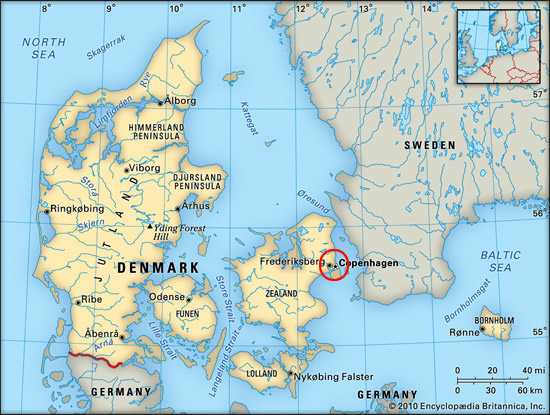
Denmark isn’t that far away from Scotland – it was less than 1.5 hours flight. I’ve been told that by Viking boat it would take around 40 days.
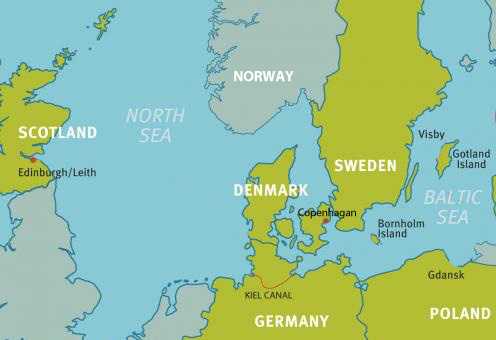
Things I’ve noticed; Denmark is completely flat, rural Denmark is nearly all farm land, there are trees here but not vast forests, have been wondering if all the trees were made into ships. Also everywhere you look you see the Danish flag which I have just found out is risen at sunrise and taken down at sunset. My neighbours have been waking me up at 4 am when they do this. People in Denmark are very proud of their homes and have amazing furniture. They have a word that can’t really be translated called ‘Hugge’ it’s having cosy time, where they burn a lot of candles and enjoy good food and alcohol. This has probably come from having such extreme weather but has also added to their general content-ness and happiness they are famous for. They are completely trusting, babies are left outside in prams, bikes unlocked but are not overtly friendly, they don’t do chit chat which takes a bit of getting used to. Wonder how much of this goes back to their Viking past?
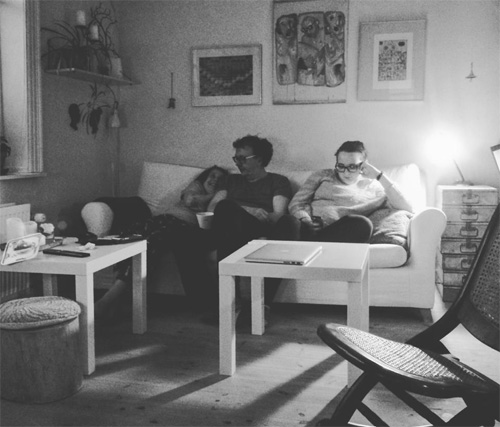
Norse Settlers in Scotland
Between the periods of 8th to the 15th centuries Scotland saw a lot of Scandinavian settlement. The Vikings (Mostly Norwegian) colonised whole parts of Scotland. The height of their influence on Scotland was around the 11th Century. Some Clans proudly claim descent from Vikings; Clan MacLeod and Clan MacNeacail are two examples.
Our Trip to Roskilde
The end of last week, on a very sunny day we took a trip out to the Viking Ship Museum, Roskilde. It’s based around an exihibiton of 5 Viking ships that were discovered in 1962 nearby at Roskilde Fjord, near the village of Skuldelev. The ships had formed part of a barrier system to protect the Cathedral and Royal City of Roskilde.
The Excavation
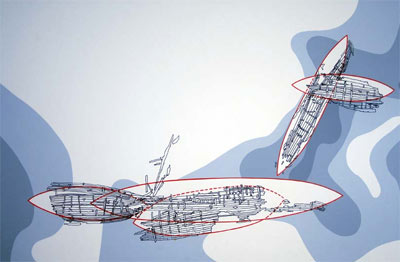
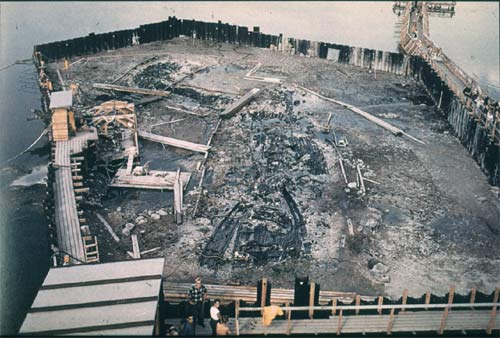
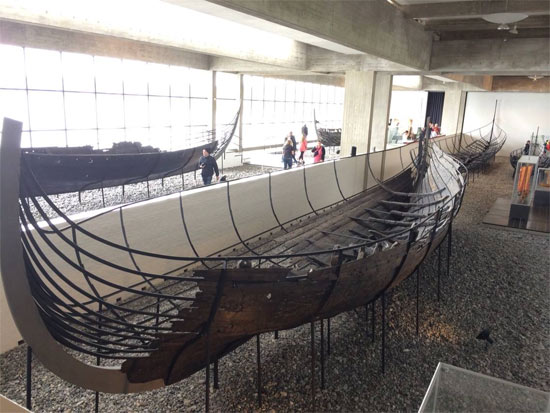
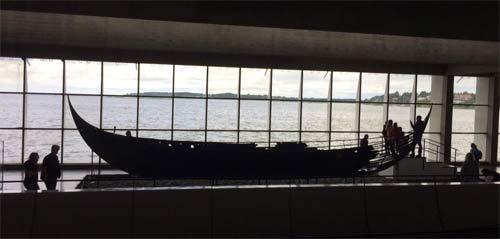
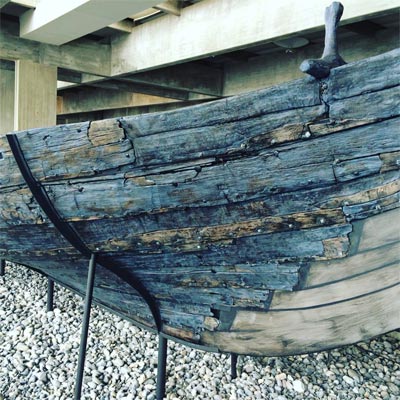
As well as seeing these original ships, which were really impressive especially seeing the size of the largest one the museum looked at all aspects of boat building, reconstructing full scale Viking ships, using replica tools.
Making the Sails
Anna Nørgaard is the museum weaver. Flax has been used in Scandinavia since the Iron Age. It’s a massive process to go from the original grass to getting it into a state you can weave with.
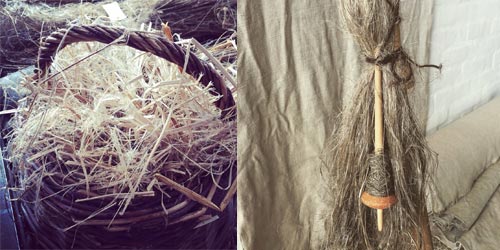
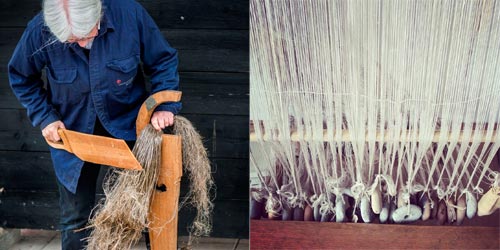
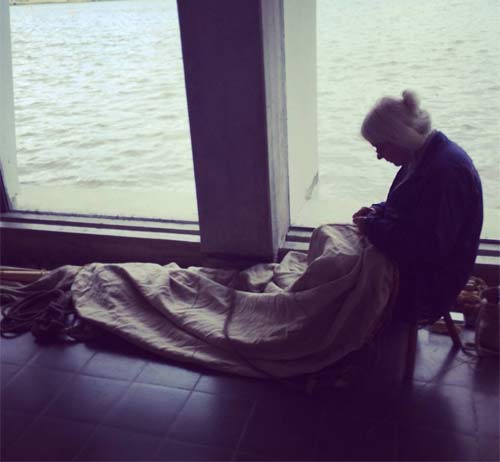
Making Rope
This I found really interesting – did you know you can make rope from things like pig hide and sealskin? Most of the rope was from bark, here is someone making lime bast rope.
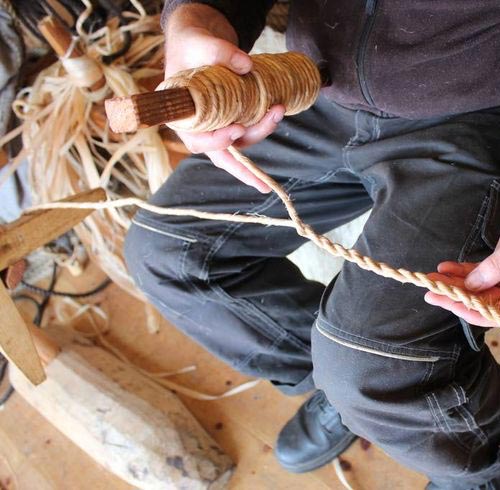
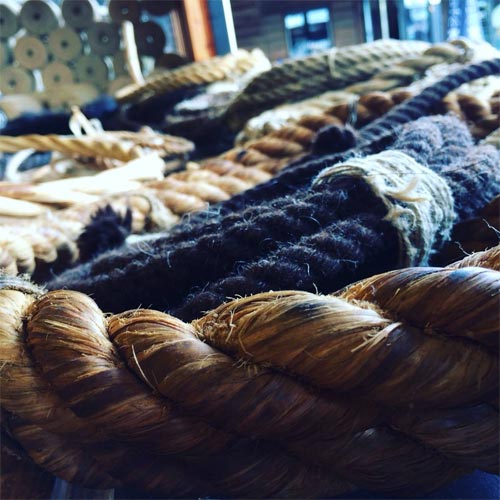
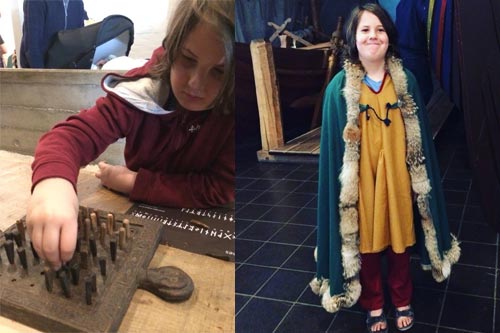
Ship reconstruction at the museum’ s boatyard
The workshop is an archaeological ship experiment this is ‘experimental archaeology’. By actually doing it – we constantly learn and get a fuller picture of the ships construction and it’s sailing characteristics. The boats they build here are used, lessons are learnt. It brings in the human element to archaeology and through this we can look at the interaction between Viking Age ships and society.
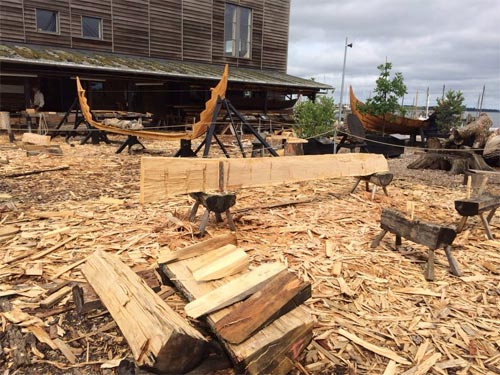
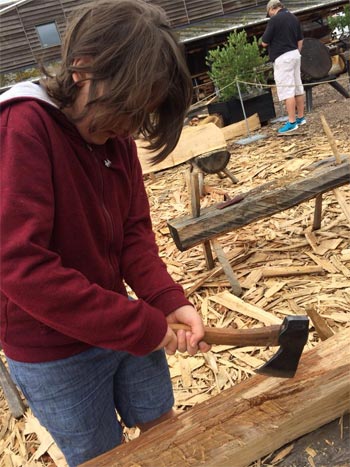
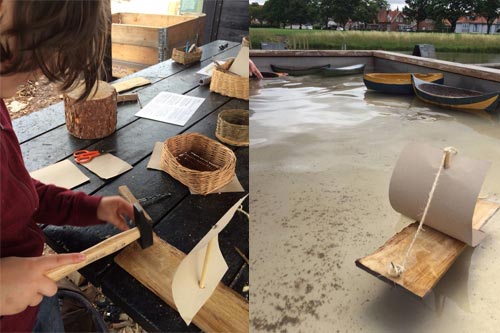
Jealously watching people departing on a 3 week Viking Voyage onboard the Sea Stallion of Glendalough, a recreation of a 9th Century Viking ship.
Just leaving while we were this is the largest reconstructed Viking boat. Can seat up to 100 people and in it’s day, the original dwarfed the Mary Rose and terrorised Europe. This time they were embarking on a 3 week voyage around Denmark, stopping off at various Viking events. They have to eat as Vikings while on board, sleep onboard and who knows where the bathroom is.
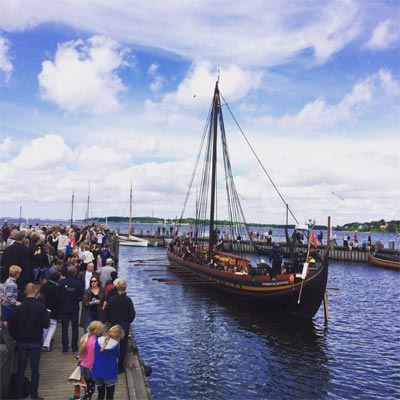
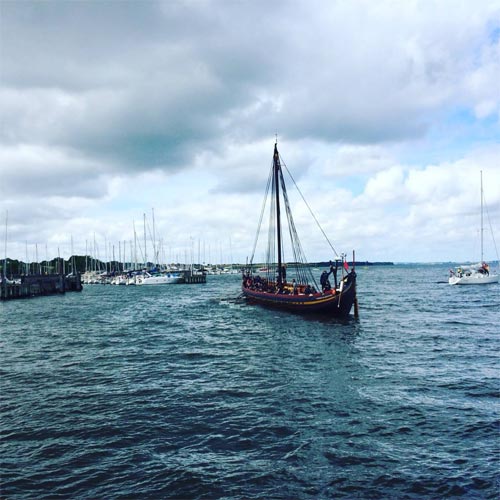
Feel very privileged that we got to see this.
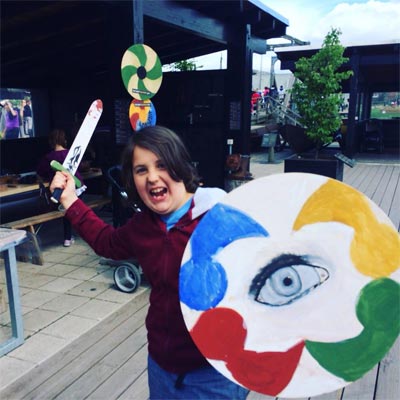
So now the Danish Vikings are a peaceful bunch, trading in their longships for bicycles. By visiting Roskilde, it’s pretty impossible to see them as the hooligans they are quite often depicted at. This craftsmanship and teamwork can be seen today combined with strong customs – ‘The Danish Way’ as I keep hearing, it must all echo back to the past. Beginning to understand why they were such a strong influence on not just Scotland but the whole of Europe.

This is a very interesting story. I hope that you are able to find out more about the vikings and their connections to the Moffat Clan
I find this input very interesting about the Moffet Family with Danish Viking ancestry. My family were MacLachlans who as a tribe or Clan are mainly from Norwegian rather than Danish ancestry. There are some Scots (and Irish) MacLachlans as well, but my particular family must have joined the Scandinavians and they went to Ireland first about 1,400 years ago, and then went on to Argyllshire and to Loch Fyne and Island of Mull, one thousand years ago, so we are mixtures of Scots, Irish, Pictish, and Danish Viking. Five of us- two women, and three men went to the Cape in South Africa to live in 1819. I believe they were escaping to a better life because there had been a terrible crop failure for several years caused by a volcanic explosion in America,which affected Europe in 1816, and which was so bad that the bog oaks in Ireland did not grow at all for several years. Some of my family changed the spelling of their name to MacLaglen because they married into Dutch families. My Uncle Victor was an actor from the 1920s onwards and played a Viking once. in the films!
Any idea if the Rattray’s from Blairgowrie Rattray have any Viking ties? They are located on The Eastern side of Scotland and down th e River Ericht.
They sailed recreated viking ships from Roskilde to Skye. Photos and the story are documented in signs outdoors at the ship museum in Roskilde. Naturally, I took photos of my Skye ancestors on my phone for this trip, and noted that they look like prototypical dark-haired Danes. Now for the next step. Will DNA hold clues, or is this too much to expect?